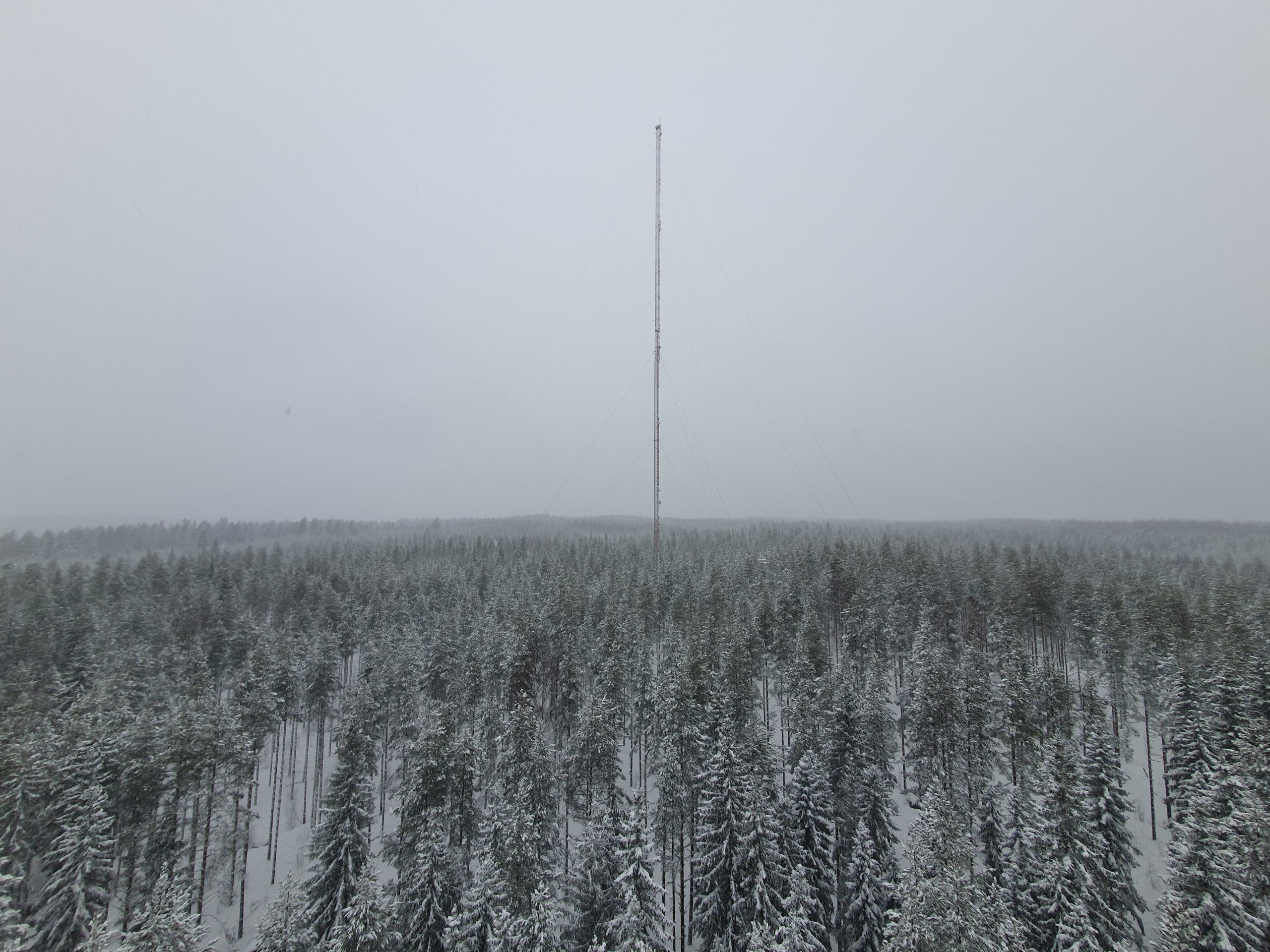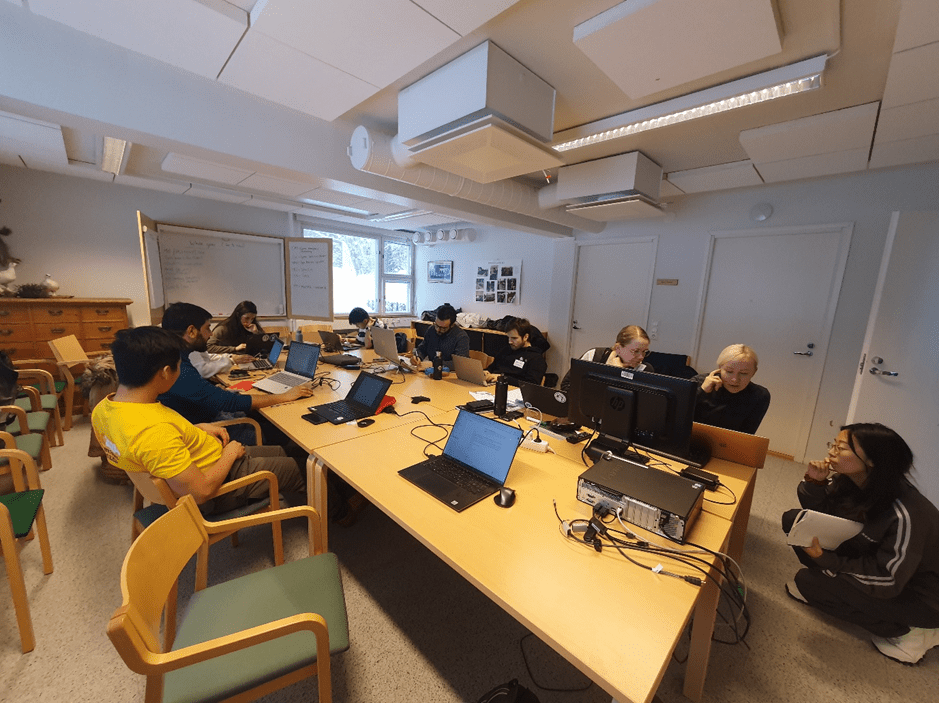
The INAR Winter School, co-organised by EMME-CARE, was successfully completed!
From the 3rd to the 14th of March, 2025 researchers from The Cyprus Institute’s Climate and Atmosphere Research Center (CARE-C) participated in and helped co-organize the annual Winter School on Advanced Analysis of Atmosphere-Surface Interactions and Feedbacks, hosted by The Institute for Atmospheric and Earth System Research (INAR) of the University of Helsinki (UH), in collaboration with EMME-CARE. The school was a unique collaboration between international students and experts in the fields of atmospheric and terrestrial ecosystem science, taking place at the Hyytiälä Forest Station in Finland. At the epicenter of the Forest Station was the multidisciplinary Station for Measuring Ecosystem-Atmosphere Relations (SMEAR) II, which gives access to 1200+ parameters from underground soil processes all the way to atmospheric conditions 125 m over ground.
The aim of this school was to give context and meaning to raw data acquired from stations around the world, giving valuable insight into the diurnal or seasonal patterns of various environments. The tasks of the course were split into four thematic groups, with a noteworthy one dealing with the differences between Cyprus and Finland. The work done in this group greatly benefited from the open-access databases provided by both the Cyprus Atmospheric Observatory (CAO) and the SMEAR. Guided by the teachers and technical assistants, the students visualized and interpreted differences in the two locations, from meteorological factors, all the way to trace gas fingerprints, major emission sources, and aerosol dynamics.
Comparing the climate and air quality of Agia Marina Xyliatou (CY) with the well-studied environment of Hyytiälä (FI), new insights were uncovered into regional-specific atmospheric dynamics. Bringing together students from multiple backgrounds, this collaboration diversified the analysis of chemistry and physics of the atmospheres of the two locations. Then, the findings were presented on multiple occasions, where valuable discussions with peers and experts in the field helped push the investigations in the right direction. This approach demonstrated how the Winter School participants could transform long-term atmospheric data, collected from various sites, into valuable characterizations of the corresponding locations.
At its core, the focus of the school was the valuable work that could be achieved by international collaboration between students, assistants, and supervisors. However, the location also fostered a wonderful environment for everyone to take advantage of during their free time.






